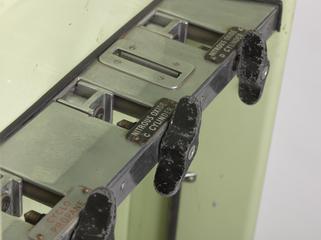




Brass door plate which belonged to Dr. Henry Hill Hickman
Henry Hill Hickman (1800-1830) is a somewhat forgotten pioneer of anaesthetics despite the experiments he carried out in the 1820s – mainly on animals. In these rather gory experiments, Hickman would anaesthetise the animal with carbon dioxide before removing a limb whilst observing the creature for signs of pain. Although he chose the wrong gas – later researchers would use safer gases such as nitrous oxide or ether – he did prove that gas inhalation could prevent pain during a surgical operation. However, in 1826 his work was dismissed as “surgical humbug” by The Lancet and Hall died in relative obscurity from TB at the age of only thirty.
The door plate is shown here with Hickman’s waistcoat (A79271).
Details
- Category:
- Anaesthesiology
- Collection:
- Sir Henry Wellcome's Museum Collection
- Object Number:
- A645118
- Materials:
- brass
- Measurements:
-
overall: 129 mm x 247 mm x 16 mm, 1.09 kg
- type:
- door plate




